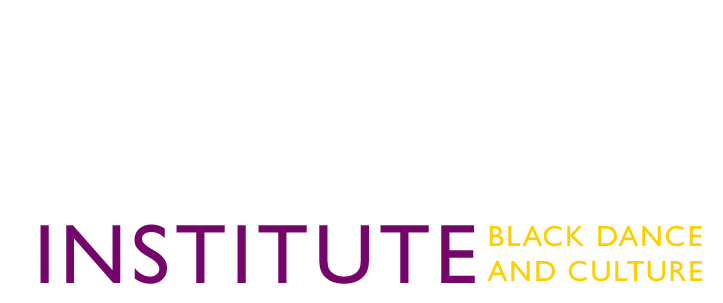The Surviving Ritual: How Spirituality Hid in The Movements Of Dance
They tried to silence the drum.
They believed that if they took the drum, they would take the spirit. That if they outlawed the chants, broke the circles, punished the movement, they could sever a people from their Gods, their memories, and their power.
But the ancestors were clever.
The body became the drum.
In the suffocating heat of a plantation field in Saint-Domingue, or under the damp skies of a Carolina coast, you could see it if you looked closely. A shoulder dipping in time with no music. A foot brushing the earth with rhythm too intentional to be idle. A group of tired bodies swaying in a circle while pretending to "relax" on a Sunday afternoon. The overseer saw entertainment. But the dancer knew better.
This was a prayer.
The enslaved remembered the sacred things, though they could not say them aloud. They remembered the river spirits of the Niger and the sky Gods of Kongo. They remembered the shrines and the songs and the circle formations under the full moon. But now the moon hung above a different continent, and the consequences were death.
So they hid the Gods.
In Cuba, a woman lit a candle to La Virgen de la Caridad, but whispered to herself the name Oshun. The Catholic saints became masks-thin paper veils over the orishas, the loas, the nkisi. Behind these veils, dances continued. Bent knees and open palms. Shuffling feet that spoke languages older than any colonial tongue.
In Brazil, they danced for the saints on festival days publicly, legally, gloriously. But the steps belonged to Candomblé. The rhythm was for Shango. Each movement told the story of a God's triumph, a people's survival. Carnival was not just a party. It was a camouflage.
In the American South, the shout ring spun counterclockwise.
It looked strange to outsiders an old woman stomping lightly, shoulders swaying, lips trembling with melody but no instruments in sight. Around her, others joined in, forming a slow-moving circle on a creaking wooden floor. They weren't supposed to be dancing this was a "praise break" after all.
But they were dancing. Oh, they were dancing.
Each clap was a coded message. Each step a portal to another world. The Ring Shout was born in the hush harbors, in the shadows of trees where no one was watching. There were no drums, so they made rhythm with hands, with breath, with the soles of their feet. And the spirits came anyway.
In Haiti, they danced through revolution.
The French couldn't understand what they saw in Bois Caïman, when men and women moved around the fire, calling out names they had never heard. The colonizers thought it was madness. But the ones dancing were calling ancestors. They were preparing for war. The rhythm of Vodou lit the flame of rebellion.
Later, in New Orleans, those rituals survived in whispers and performance. The tourists came for "voodoo shows," watching women dance in headscarves and gold earrings. They saw spectacle. What they didn't see was lineage. What they didn't know was that every step followed a tradition passed from mother to daughter, elder to youth, hidden in plain sight.
Movement became memory.
In Bahia, Brazil, capoeira moved like wind graceful, circular, lethal. It looked like play-a game between two fighters in a roda. The government outlawed it for a time, fearing it was a tool of resistance. And it was. But it was also prayer.
To dodge was to survive. To kick was to remember. Each movement in capoeira mirrored not just combat, but cosmology. The berimbau sang the rhythm of ancestors, and the players danced the line between defiance and devotion.
Even in the North far from sugarcane and coffee plantations movement carried the hidden codes.
In Puerto Rico, the Bomba called dancer and drummer into battle. She stepped. He answered. She spun. He cracked his drum. The music was a fight and a flirtation, a test and a ceremony. In New York, the children of the diaspora took up the baton-this time with brass and clave. Salsa, the people called it. But beneath its hips and horns, it carried the DNA of Yoruba gods and Caribbean soil.
Every diaspora dance floor became a church without walls.
Time passed. Empires fell. New borders formed. But the movement remained.
In the Gullah Geechee Sea Islands, the old ways held on. Songs that healed, dances that planted, shouts that birthed children and buried elders. These weren't just traditions-they were blueprints for survival. Some only remembered the shapes, the steps, the sounds. Others still knew the meanings.
And even when the meanings were forgotten, the movements kept them alive-like seeds buried deep, waiting for rain.
Today, you see it in festivals. In the Rara of Haiti. In the J'Ouvert streets of Trinidad, where blue-clay dancers move with a madness that echoes gods of war and fertility. You hear it in samba schools preparing for Carnival. You feel it in dance classes across Brooklyn and Brixton, Dakar and Salvador.
What once had to be hidden is now being claimed. Ritual is no longer in disguise. It is in reclamation.
And yet, the spirit has not changed.
Dance is still invocation. Still memory. Still resistance. It is how a people carried their soul across oceans and centuries, when everything else was stolen or erased.
So the next time you see the hips sway in a circle, the foot tap a beat older than time, the hand stretch skyward as if remembering
Know that you are witnessing more than movement.
You are witnessing survival.
You are witnessing spirit.
Still dancing. Still here.
